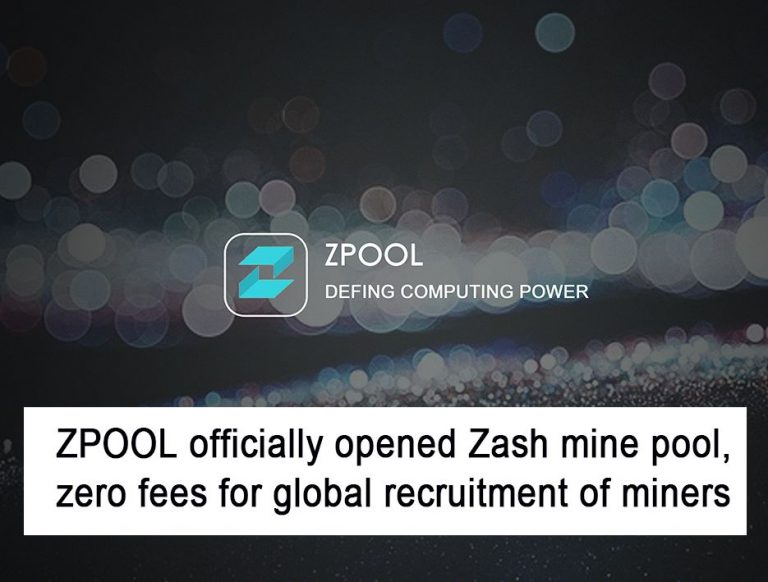2022-3-2 02:33 |
Merchants who immediately sell their Bitcoin for fiat currency create downward pressure on the Bitcoin price and that’s no secret. However, the merchants aren’t the only people to blame. The proof-of-work (POW) system used by Bitcoin and other cryptocurrencies fails to create an incentive for miners to hold onto their coins, which means that 3,600 BTC may be sold per day to pay for electricity and rent, alone. The mined bitcoins has a value of more than $180 000. Depending on the type of pool used, some miners sell their coins throughout the day, or at the end of the week or month, while others sell their coins immediately after being awarded their coins. This constant selling causes constant downward pressure on the price of Bitcoin.
There are two systems by which miners can earn rewards for investing in digital currencies: Proof of Work Mining and Proof of Stake Mining.
Ethereum plans to switch from Proof of Work (PoW) based mining to Proof of Stake (PoS) mining in the near future. Both PoW and PoS are algorithms for reaching consensus on the blockchain. However, they go about it in different ways.
I will explain to you the main differences between Pow and PoS in this article. I will also provide you a definition of mining, or the process new digital currencies are released through the network.
Also, if the Ethereum community decides to do the transition from “work” to “stake”, what will change regarding mining techniques?
This article is a step-by-step guide to understanding the problem above.
What is the Proof of Work?
Let’s start with basic definitions.
Bitcoin is based on a PoW (Proof of Work) system. In this system the probability of mining a block is dependent on how much work is done by the miner.
PoW is a protocol that has the main goal of deterring cyber-attacks such as a distributed denial-of-service attack (DDoS). This has the purpose of exhausting the resources of a computer system by sending multiple fake requests.
The PoW concept existed even before bitcoin. However, Satoshi Nakamoto applied this technique to his/her digital currency revolutionizing the way traditional transactions are set.
In fact, Proof of Work idea was originally published in 1993 by Moni Naor and Cynthia Dwork. However, the term “proof of work” was coined in a document published in 1999 by Ari Juels and Markus Jakobsson.
But, PoW is maybe the greatest idea behind the Nakamoto’s Bitcoin white paper since it allows trustless and distributed consensus. The paper was published back in 2008.
PoW happens through miners trying to solve extraordinarily difficult math problems. Finding a solution is basically a guessing game. However, checking if a solution is correct is simple. It takes real-world resources to work out these solutions, which means that miners aren’t able to cheat the system.
These real-world resources are electricity and computers and that’s where a main problem with PoW stems from. It takes a lot of power to run the computers, or clusters of computers, that calculate different potential solutions, which is not ideal, from an ecological standpoint. This is bad for the environment and it also leads miners to have high energy costs.
You need a serious amount of computing power, more than the average person could afford, or would even be able to work with. This means the mining community is getting smaller and more exclusive, which goes against the idea of decentralization, and could potentially lead to a 51% attack.
Due to the Tragedy of the Commons, there are fears that Proof of Work systems can lead to low network security and this has led to some coins adopting a Proof of Stake system.
51% AttackA 51% attack is when 51% of the network’s computational power is controled by a miner, or more likely a mining pool. They could invalidate valid transactions and double spend funds with that ability. They’d achieve this through creating and confirming their own fraudulent blocks, and do it so fast. The rest of the mining community creating genuine blocks would have their legitimate work invalidated.
That’s where Proof of Stake could really help, because even if someone owned 51% of a digital currency, it would not be in their interest to attack something in which they have a majority share. Also, due to it prohibitively expensive it’s very unlikely that anyone would be interested in purchasing up 51% of a currency. According to game theory, any attack would only serve to destabilize the digital currency, diminishing the value of their stake, which means that those with a larger stake in a cryptocurrency should want to maintain a secure network.
Bitcoin’s Tragedy of the Commons
A tragedy of the commons for Bitcoin means that there is less incentive to avoid a 51% attack as payouts becomes smaller and smaller for Bitcoin miners. The Proof of Stake systems makes any 51% attack more expensive, which means that someone trying to doublespend and destroy faith in the network would have to own a majority of the coins, and the attacker would suffer from his actions.
However, PoS systems alone don’t work. You can’t create a community around your coin without mining. Most coins that adopt Proof of Stake use a mixed system with both Proof of Stake and Proof of Work and the reason for this is because POS encourages hoarding that is great for speculation but not for currency, which is supposed to be used. According to Fred Wilson, a self-proclaimed Bitcoin believer and venture capitalist, people are hoarding their coins due to the price volatility and speculation. People fear that the hoarding of bitcoins will lead to a deflationary spiral. This could cause the Bitcoin price to plummet and ultimately signal the death of the currency and by design, Proof of Stake system could unintentionally exacerbate the hoarding issue.
Also, PoS systems are not as safe as a simplified explanation of them might make them out to be, since if there are 500 coins in circulation, but only 50 coins staked, an attacker would only need 51 staked coins to perform the attack. Now imagine what would happen if there were only 2 staked coins.
What’s Trustless and Distributed Consensus?
A trustless and distributed consensus system means that you don’t need to trust in third-party services if you want to send and/or receive money from someone.
You need to trust in a third party to set your transaction (e.g. MasterCard, Visa, banks, PayPal) when you use traditional methods of payment, because they keep their own private register which stores transactions history and balances of each account.
To better explain this behavior I will give you this example: if Ann sent John 100 USD, the trusted third-party service would debit Ann’s account and credit John’s one. This means that they both have to trust this third-party is going to do the right thing.
Everyone has a copy of the ledger (blockchain) with bitcoin and a few other digital currencies. This means that no one has to trust in third parties, because anyone can directly verify the information written.
Proof of Work and Mining
PoW is a requirement to define an expensive computer calculation (aka mining). This calculation needs to be performed in order to create a new group of trustless transactions (the so-called block) on a distributed ledger called blockchain.
Mining serves as two purposes:
To reward miners for performing the previous task, which will create new digital currencies; To avoid the so-called double-spending, or to verify the legitimacy of a transaction.This happens behind the scenes when you want to set a transaction:
Transactions are bundled together into a block Miners have to verify that transactions within each block are legitimate Miners should solve a mathematical puzzle known as PoW problem to do so The miner who first solves each blocks problem is given a reward Finally, verified transactions are stored in the public blockchainThis “math puzzle” has a key feature: asymmetry. In fact, the work on the requester side must be moderately difficult, but simple to check for the network. This idea is also known as a CPU cost function, CPU pricing function, computational puzzle or client puzzle.
All the network miners compete to be the first to find a solution for the math problem that concerns the candidate block. This is a problem that cannot be solved in other ways than through brute force so that essentially requires a great number of attempts.
When a miner finally finds the right solution, he/she announces it to the whole network. After that, he/she will receive a cryptocurrency prize (the reward) provided by the protocol.
Mining process is an operation of inverse hashing from a technical point of view. It determines a number, so the cryptographic hash algorithm of block data results in less than a given threshold.
This threshold is what determines the competitive nature of mining – more computing power is added to the network, the higher this parameter increases. This method will also increase the average number of calculations needed to create a new block, as well as the cost of the block creation, pushing miners to improve the efficiency of their mining systems to maintain a positive economic balance. This parameter update should occur about every two weeks. Also, every 10 minutes a new block is generated.
PoW is not only used by the bitcoin blockchain but also by ethereum and other blockchains.
It is important to note that now Ethereum developers want to turn the tables, using a new system called PoS (Proof of stake).
What is a Proof of Stake (PoS)?PoS is a different way to validate transactions based and achieve the distributed consensus and it by a miner putting up a stake, or locking up an amount of their coins, to verify a block of transactions.
It is still an algorithm, and the purpose is the same of the PoW. However, the process to reach the goal is quite different.
PoS first idea was suggested in 2011 on the bitcointalk forum. However, the first digital currency to use this method was Peercoin in 2012, together with NuShares/NuBits, BlackCoin, Nxt, ShadowCash, Qora and Nav Coin.
In the PoW the algorithm rewards miners who solve math problems with the aim of validating transactions and creating new blocks. On the other hand, with the PoS, the creator of a new block is chosen in a deterministic way, depending on its wealth, also defined as stake, and there is no block reward.
The cryptographic calculations in Proof of Stake are much easier for computers to solve. You only need to prove you own a certain percentage of all coins available in a given currency. For instance, you’d be able to mine 2% of all transactions across Ethereum if you somehow owned 2% of all Ether (ETH).
With PoS system technically anyone could become a miner, which means that it would be a more fair system than PoW. Proof of Stake offers a linear scale regarding the percentage of blocks a miner could confirm, because it’s based on that miner’s stake in the cryptocurrency, which means someone with ten times more coins would only mine ten times more blocks. Spending ten times as much money on mining hardware will produce higher computational power logarithmically under PoW protocol, and, due to the nature of reduced prices when purchasing in bulk, allow for more equipment. Also, since highly expensive equipment often functions much better than less expensive counterparts, this might provide further advantages.
Also, all the digital currencies are previously created in the beginning, and their number never changes, which means that there is no block reward in the Proof of Stake system, so, the miners take the transaction fees.
In fact, that’s why miners are called forgers in this Proof of Stake system.
We could help to encourage more community participation in Ethereum, as well as help decentralization by switching to PoS. Taking mining out of the hands of the few pools of GPU farms doing the bulk of mining would distribute the work evenly across the network. This could lead to a more democratized system.
Why Ethereum Wants to Use Proof of Stake?
To make a transition from PoW to PoS, the Ethereum community and its creator, Vitalik Buterin, are planning to do a hard fork.
But why they want to make a transition from Proof of Work to Proof of Stake?
Miners need a lot of energy in a distributed consensus-based on the PoW, and one Bitcoin transaction required the same amount of electricity as powering 1.57 American households for one day (data from 2015).
And these energy costs are paid using fiat currencies. This leads to a constant downward pressure on the digital currency value.
Experts argued in a recent research that bitcoin transactions may consume as much electricity as Denmark by 2020.
Developers are pretty worried about this issue. That’s why the Ethereum community wants to exploit the PoS method for a more cheaper and greener distributed form of consensus.
Also, rewards for the creation of a new block are different. With PoW, the miner may potentially own none of the digital currency he/she is mining, while in PoS, forgers are always those who own the coins minted.
How are Forgers Selected?
There will exist a validator pool if Casper (the new proof of stake consensus protocol) will be implemented. Users can join this pool to be selected as the forger and this process will be available through a function of calling the Casper contract and sending Ether together with it.
Vitalik Buterin explained on a post shared on Reddit that you automatically get inducted after some time.
He also said that there is no priority scheme for getting inducted into the validator pool itself. Anyone can join in any round they want, irrespective of the number of other joiners.
The reward of each validator will be “somewhere about 2-15%.” However, he is not sure yet.
Also, Buterin argued that there will be no imposed limit on the number of active validators (or forgers). However, if there are too many validators, this will be regulated economically by cutting the interest rate and if there are too few validators, it will be regulated economically by increasing the reward.
[thrive_leads id=’226′]
Making the SwitchIn the near future, Ethereum is planning a hard fork to switch from Proof of Work to a Proof of Stake system. Ethereum will most likely use a protocol called Casper. However, Casper may not ultimately be the protocol used in Ethereum since specifics are still undecided. Gustav Simonsson is a contributor to Ethereum. He was on Ethereum’s subreddit and spoke about potential options, “[a]t string.technology we’re exploring Proof of Stake algorithms using BLS/threshold which we believe have interesting tradeoffs compared to Casper and we’re aiming to open source and publish more info on BLS/threshold soon (for use in both private & public Ethereum-based chains).” So Ethereum seems to be looking into many options and several variations of PoS protocols. However, Casper still appears to be the frontrunner.
Proof of Stake system would do away with traditional miners, and create virtual miners, or validators. You’d need to be bonded to become a validator. This means that you’d commit a certain amount of Ether to the Casper contract. The probability of a validator producing a block is proportional to their stake. This is similar to Proof of Work, where the probability of producing a block is proportional to a miner’s computational hashing power.
You no longer have access to your Ether (ETH) as long as you’re mining, once you’ve staked it. Ethereum has mentioned a proposed minimum and maximum amount of Ether a validator could stake and the more you stake, the better your chance of solving a block. It is important to note that these specific numbers aren’t set in stone, and most likely won’t be until the protocol is completely designed. The idea is to make sure only a certain percentage of all coins mined could be locked up in the Casper contract, which would solve any problem where mass hoarding of coins could impact the overall value of the currency.
The Proof of Stake protocol is a validator and as such, it will randomly assign you the right to create a block, based upon the value of your stake against the value of all Ether. Every block, a sequence of validators is pseudorandomly selected to make the next block and the first person in the sequence will usually make the block. If they happen to be offline, the protocol would simply switch to the next validator in sequence, and so forth if necessary, until an online virtual miner creates a block. It is important to note that when if they happen to be offline, they’d incur penalties (which have yet to determined) and most likely be invalidated as a miner.
Validators can withdraw their bond when they want to stop their virtual mining. Their Ether isn’t instantly returned though, and they have to wait an unspecified amount of time before receiving their deposit. This is to ensure certain types of attacks and fraud aren’t possible. This gives the blockchain enough time to grow so their deception can easily be invalidated.
A Safer System?
Any computer system wants to be free from the possibility of hacker attacks. This is particularly the case if the service is related to money.
So, the main issue is: PoS is safer than PoW?
Experts are worried about it. Also, there are few skeptics in the community.
Using a PoW system, bad actors are cut out thanks to economic and technological and disincentives.
In fact, programming an attack to a Proof of Work network is very expensive. This means that you would need more money than you can be able to steal.
Instead, the underlying Proof of Stake algorithm must be as bulletproof as possible, since a Proof of Stake-based network could be cheaper to attack without especially penalties.
Buterin created the Casper protocol to solve this problem. He designed an algorithm that can use the set some circumstances under which a bad validator might lose their deposit.
He explained: “Economic finality is accomplished in Casper by requiring validators to submit deposits to participate, and, if the protocol determines that they acted in some way that violates some set of rules, by taking away their deposits (‘slashing conditions’).”
Slashing conditions refer to the circumstances above or laws that a user mustn’t break.
Conclusion
Validators do not have to use their computing power thanks to a Proof of Stake system, because the only factors that influence their chances are the current complexity of the network and total number of their own coins.
So the following benefits may be provided from possible future switch from Proof of Work to Proof of Stake:
A safer network because attacks are more expensive – the market reacts by fast price appreciation if a hacker would like to buy 51% of the total number of coins. Energy Efficiency and SavingsCasper will be a security deposit protocol which relies on an economic consensus system. Thanks to the new blocks creation, nodes (or the validators) have to pay a security deposit to be part of the consensus. Thanks to its control over security deposits, Casper protocol will determine the specific amount of rewards received by the validators.
If one validator creates an “invalid” block, his security deposit will be deleted. His privilege to be part of the network consensus will be deleted as well.
In other words, the Casper security system is based on something like bets and, in a Proof of Stake-based system, bets are the transactions that will reward their validator with a money prize together with each chain that the validator has bet on.
So, Casper is based on the idea that validators will bet according to the others’ bets. They will also leave positive feedbacks that are able accelerates consensus.
There are still many variables to be worked out. However, switching from PoW to a PoS protocol isn’t just better for the environment, it increases community participation, and helps to level the playing field for miners. All these things are good for Ethereum.
The post Proof of Work vs Proof of Stake: Step-by-Step Mining Guide appeared first on CaptainAltcoin.
Similar to Notcoin - Blum - Airdrops In 2024
PROOF (PF) на Currencies.ru
|
|
























